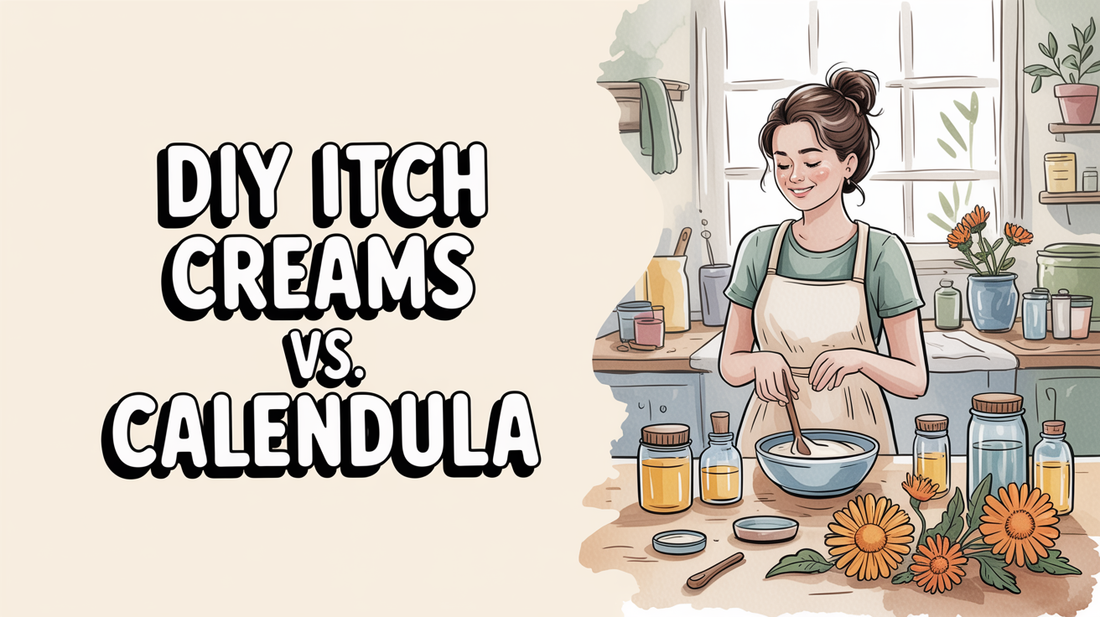DIY Anti-Itch Cream Recipes (and Why Calendula Cream Is Easier)
diy anti itch cream, homemade itch relief, calendula diy cream — If you're searching for natural alternatives to commercial products, you're not alone! This post will explore your options in DIY anti-itch solutions, providing you with actionable insights in three clear sections. Let's dive into the world of soothing homemade remedies!
Popular DIY Anti-Itch Recipes
DIY anti-itch creams have become a go-to option for many seeking natural relief. Among the most popular recipes are oatmeal-based creams, which utilize the soothing properties of colloidal oatmeal. You can easily create a calming mixture by blending ground oats with coconut oil or aloe vera gel, making it accessible for those with skin sensitivities.
Aloe vera gel is another essential ingredient in many DIY formulations, known for its gentle cooling effects. When combined with essential oils like lavender, it can enhance the soothing experience. However, always remember to dilute essential oils properly for safety.
- Oatmeal blends with coconut oil or shea butter can soothe dry skin.
- Aloe vera gel mixed with lavender or tea tree oil adds cooling benefits.
- Coconut oil and shea butter create moisturizing bases for balms.
- Witch hazel and apple cider vinegar can be used, but remember to dilute.
- Essential oils like chamomile and peppermint are popular additions.
Pros and Cons of Homemade Remedies ✨
While DIY anti-itch creams can be cost-effective and provide ingredient control, they also come with challenges. For instance, basic ingredients like oatmeal and coconut oil are generally less expensive than commercial products, allowing you to save significantly on your skin care costs. However, homemade creams often lack preservatives, which can impact their safety and shelf life.
Customization is a major perk, as you can adjust recipes to suit your skin's changing needs. Yet, this flexibility also presents a downside: inconsistent potency can lead to unpredictable results. For example, if you mix a batch of cream one day and find it effective, the next batch might not have the same results due to variations in ingredient mixing.
- Cost-effective alternatives to commercial creams.
- Control over ingredients, avoiding irritants and allergens.
- Ability to customize based on individual skin needs.
- Short shelf life poses safety concerns.
- Preparation can be time-consuming and requires careful measuring.
Why We Recommend a Gentle Helper 🌿
Jane Vine Calendula Cream is formulated for quick absorption and a soothing, lightweight feel. It may support a calm routine and help reduce skin irritation.
- Fast-absorbing and unscented.
- Contains skin-soothing ingredients.
- Inspired by Nature.
Why Calendula Cream Saves Time and Mess 🔍
Calendula cream stands out as a convenient alternative to DIY solutions. One of its key advantages is the pre-formulated consistency, which ensures reliable potency and effectiveness with every use. Unlike homemade options, commercial calendula creams undergo rigorous quality testing, providing peace of mind regarding their active ingredients.
Additionally, calendula creams typically have a shelf life of 12-24 months, significantly outlasting homemade versions. This means less waste and a reduced risk of contamination. The professional extraction methods used in these creams also maximize the beneficial compounds, potentially offering superior skin soothing properties.
- Guaranteed potency and effectiveness from professional processing.
- Longer shelf life reduces waste and contamination risks.
- Convenience of ready-to-use products without preparation hassle.
- Safety standards ensure a lower risk of skin irritation.
- Overall cost-effectiveness when considering time and ingredient waste.

